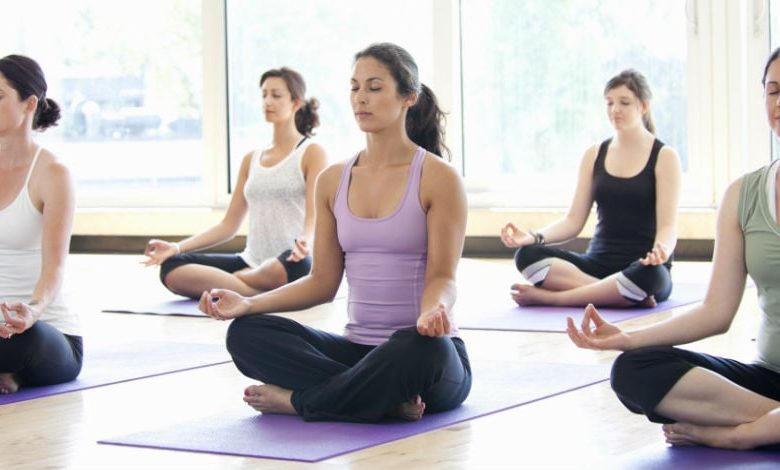Do’s and Don’ts of Yoga Practice

Yoga is living consciously, emphasizing mindfulness, breathwork, and self-awareness. It’s also a great way to stay fit—if you’re practicing correctly. Here are some do’s and don’ts to consider when starting with yoga or advancing your practice.
Do: Be mindful of your breath.
If you’ve ever practiced yoga, you already know how much attention is paid to the breath. And this is for a good reason: We are reminded of our connection to the world around us with each inhale and exhale.
In addition to being the foundation of yoga practice, our breath also plays a crucial role in maintaining good health.
The breath serves as an essential bridge between mind and body by connecting us with our deepest self (through awareness), energizing our muscles (through oxygen), cooling down excess heat in our bodies (through evaporation), and calming down anxious thoughts or emotions (through its rhythmic nature).
Breathing exercises are often recommended to strengthen your breath control—there are many ways to do this! You can focus on each inhalation and exhalation individually, count them one at a time until you reach ten breaths, or try counting every fifth breath instead.
Once you’re comfortable focusing on your breathing, try extending your counts further—up to 20 or even 100 breaths per count! If physical activity sounds like too much work but sitting still isn’t doing it for you, consider practicing mindfulness meditation while focusing on your breaths instead!
This form of meditation encourages participants to think about what they’re doing and why they’re doing it—which can be very helpful if trying something new makes us feel uncomfortable or uneasy about ourselves.”
Do: Listen to your body.
“Listen to your body.”
Stop if you feel pain: If you are feeling pain, stop and see if it is just a temporary sensation. If not, see a doctor. It is better to stop than to continue pushing through the pain, as it may lead to injuries or other health problems later.
Do: Practice lots of different kinds of yoga.
Yoga is a great way to improve flexibility and strength, so choosing a comfortable style is essential. If you’re new to yoga, start with an introductory class and build up from there.
Do: Be open-minded!
There are many different types of yoga—you may find that one style works better for you than another. The best way to determine which type of practice is right for you is by trying them all out!
Don’t: Assume every pose will be easy or feel good (and vice versa).
Only some poses will feel comfortable or natural at first; this takes time, practice, and patience!
Don’t skimp on the basics.
These pre- and post-practice routines are essential for maintaining good form and balance, but many people skip them because they take extra time.
Don’t be that person! The pros understand that to get the most out of your practice, you must take care of your body before and after class.
Also, remember that this isn’t a race—you don’t have to be done with everything as soon as possible!
Don’t worry about how your form looks or compare yourself to others.
The point of yoga practice is to focus on the breath and body, not how much you can do or how many poses you can get into (although that’s a fun goal once you’re familiar with the basics).
Focus on being fully present in the moment. In this way, yoga will give you an opportunity for self-reflection and quiet reflection that might be hard to find otherwise.
Avoid forcing yourself into uncomfortable or painful poses—signs that something isn’t right! Instead of pushing through discomfort and pain, take time out from doing those challenging poses until they feel more comfortable for your body type and abilities.
Do: Stay hydrated before, during, and after practice.
Stay hydrated before, during, and after practice.
Do: Drink water before class.
To stay properly hydrated, it is recommended that you drink about 16 ounces of water one hour before your yoga class. This will help ensure that your body is well-prepared for the physical demands of the class.
Don’t: Wait until halfway through class to drink water because you’re thirsty! By then, it may be too late for your body to respond effectively and prevent dehydration from occurring.
Do: Drink plenty of fluids during class.
When we sweat (which happens when practicing hot yoga), we lose sodium and potassium and our precious bodily fluids (mostly water).
Drinking enough water while sweating helps replace these lost nutrients while preventing dehydration during hot yoga practices or any other type of exercise regimen involving heavy sweating, such as cardio classes or weightlifting sessions at the gym! It’s also essential to drink water before class and while practicing to maintain proper hydration throughout your practice session.
Do: Stay safe during practice.
As with any physical activity, it is essential to practice yoga safely. Here are some standard safety guidelines when practicing yoga:
● Wear the appropriate clothing. This may include a yoga mat and comfortable clothing such as loose pants or shorts.
● Make sure you have enough space to move around freely in all directions without bumping into other people practicing around you.
While some people like having lots of other students around them when they first begin practicing, most prefer more personal attention later on once their form has improved significantly; for this reason, it’s best not too many people show up at one time unless otherwise specified by your instructor beforehand (i..e., group private yoga classes).
A good rule of thumb is never to wait until class starts before picking out where exactly.
Keep your practice simple.
This doesn’t mean you should practice with an attitude of “anything goes.” It means that you should be open to trying new things when you feel like your practice is getting stale or stagnant. For example, if your teacher suggests trying a new pose for the first time, don’t be afraid to try it out!
If something feels off or uncomfortable at first, give yourself permission to stop and investigate why this might be happening. The answer could lead you down an unexpected path to beautiful discoveries about yourself!
The more comfortable and familiar we become with our bodies and how they work together in space, the easier it becomes for us as humans (and yogis!) to notice what works best for us individually—not just as a group exercise but also terms of self-care.
What’s important here is not necessarily whether or not we “know” all these things already but rather how willing we are becoming towards ourselves through these practices.”
Do balance work with rest and relaxation.
It’s important to understand that rest and relaxation are just as important as exercise. You must balance your yoga practice with regular rest. If you’re not getting enough sleep or taking time to relax, then you’ll be more likely to injure yourself during your workout. This can lead to a downward spiral of poor health and fitness habits that could take years to break out of again.
To relax:
- Sleep well
- Meditate or do yoga Nidra (yogic sleep), which is like guided meditation but uses physical positions rather than mental focus
- Take some time each day for quiet contemplation.
Effective yoga practice requires mindfulness and safety.
Effective yoga practice requires mindfulness and safety. Taking care of your body is an integral part of this, so let’s talk about some ways you can do that:
Practice with a partner. Yoga is meant to be done in the community because it’s about building connections and fostering support for each other’s growth.
Practicing with a friend or trusted colleague will help remind you to be mindful of your own body and that there are people who have your back while you’re learning new postures or challenging yourself in new ways.
Practice in a safe environment. It’s tempting to go out onto the street corner and do sun salutations on the sidewalk! But if you want to do this without getting run over by cars (or worse yet—a cyclist), it might be better to practice inside first until you feel comfortable enough outside that it doesn’t distract from your focus on staying safe during the practice itself!
Conclusion
As you can see, there are many different things to consider when planning your yoga practice. While it’s essential to be mindful of your breath, form, and safety during practice, there should be other things on your mind.
It would be best if you also were mindful of how much time you spend practicing each day so that the rest of your life isn’t neglected.






